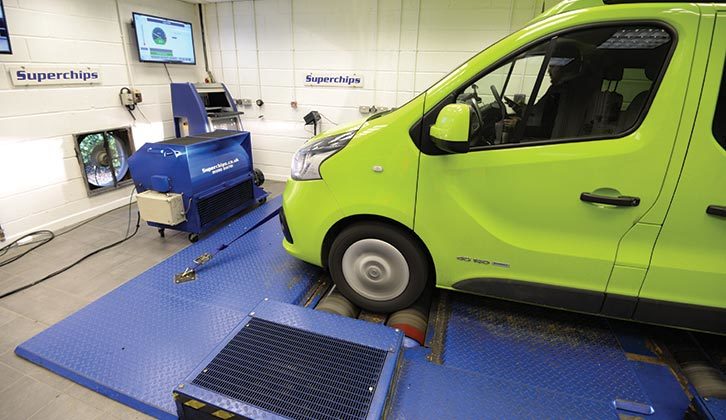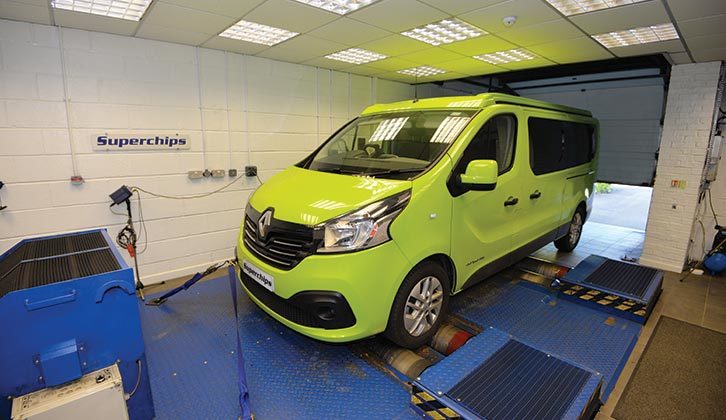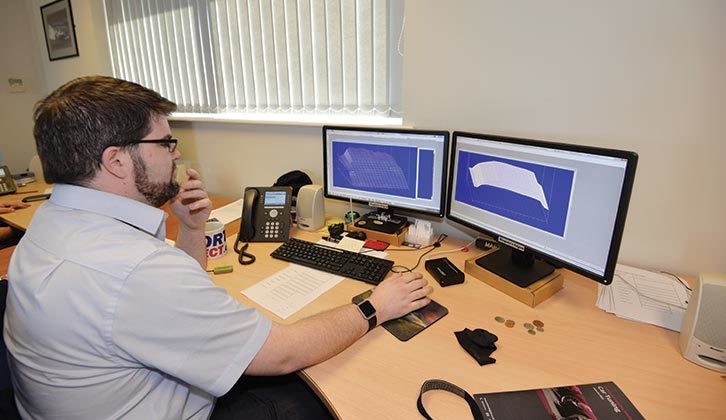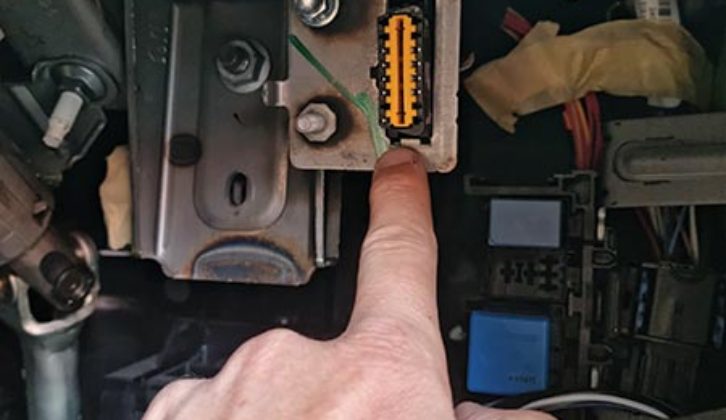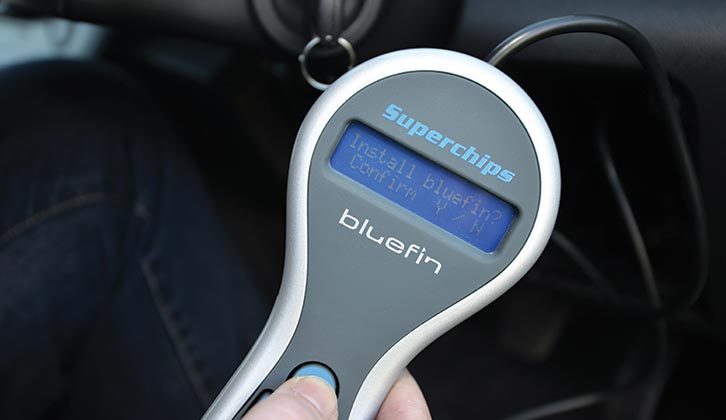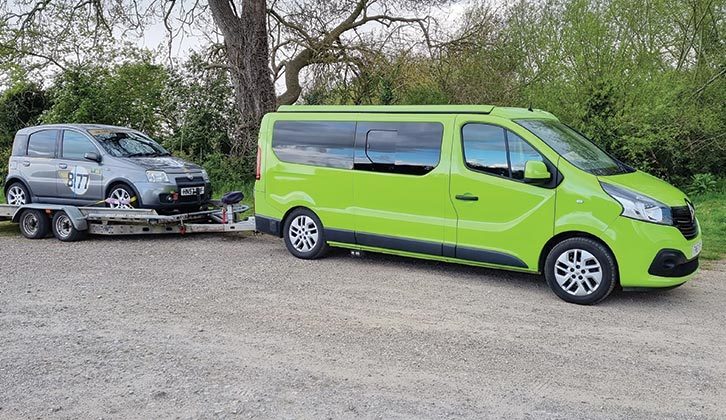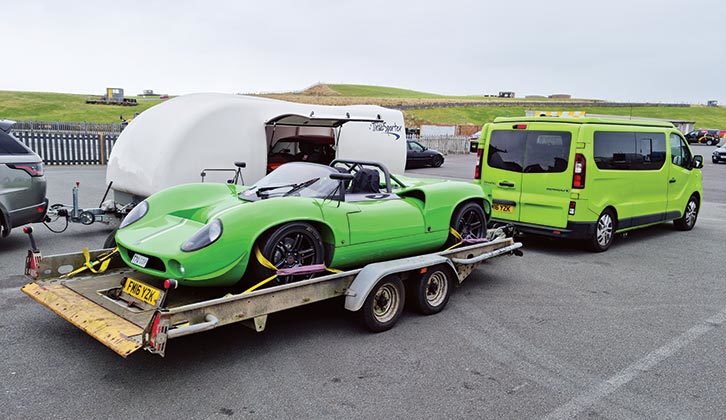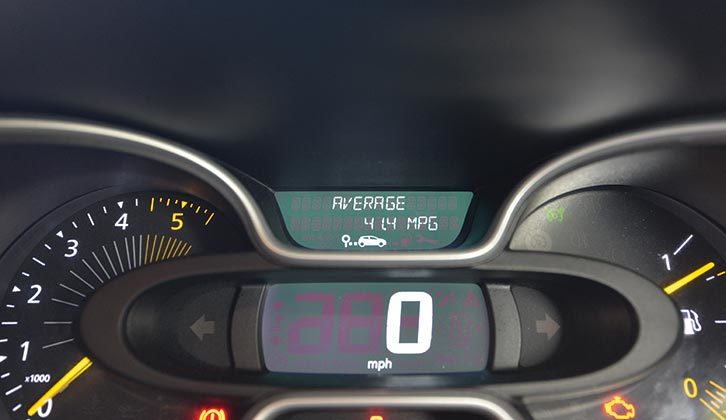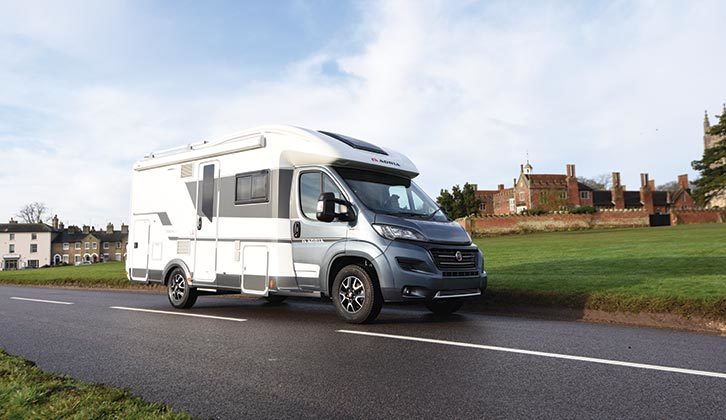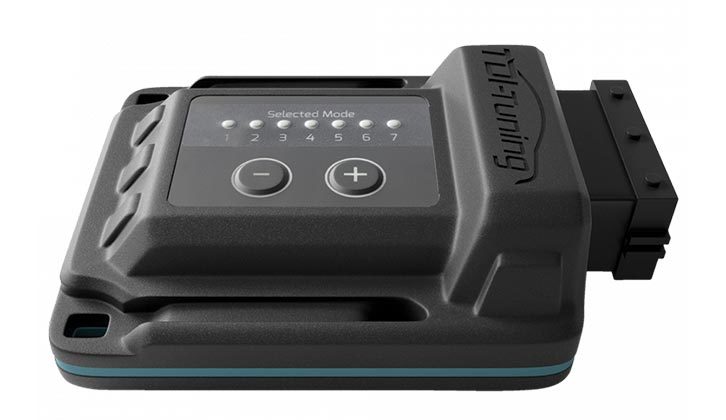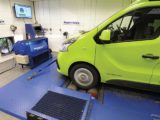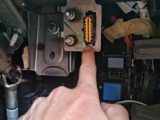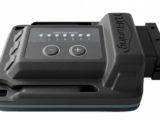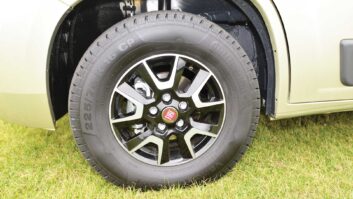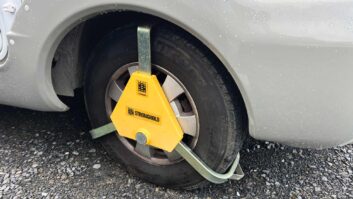In all my years of writing for the motorhome industry, nobody has ever contacted a magazine to complain that they have too much power. All motorhomes are, in effect, fully laden ‘vans running close to their maximum payload most of the time. They really do need all the power that they can get – that’s where motorhome engine remapping can come in.
The thing about having additional power is that it’s not about speed or acceleration – no motorcaravanner wants to smash up all their crockery or make the dog feel travel sick.
Extra engine performance makes vehicles far more relaxing to drive. Instead of having to drop a gear for a gentle slope, extra power means you just need a little squeeze on the accelerator.
It makes joining a motorway less stressful, too, because you don’t need to work the gears so hard to get up to speed on the sliproad.
There’s a reason all luxury cars are powerful – the execs who drive them don’t want to whizz about, what they want is the effortless waft that comes with having increased horsepower.
At this point some of you are no doubt thinking, “But I don’t want to go any faster – fuel prices are shooting up, I need more economy.”
Counterintuitively, this is another area where increased horsepower can sometimes help. Economy is largely a function of revs and load. Clearly an engine has a fixed capacity determined by its cylinder volume – a 2.0-litre engine holds two litres of fuel-air mix (so each cylinder holds 500ml at a time), so the more times you can refill these cylinders per minute, the more fuel you’ll use. The higher the revs, the more fuel you burn.
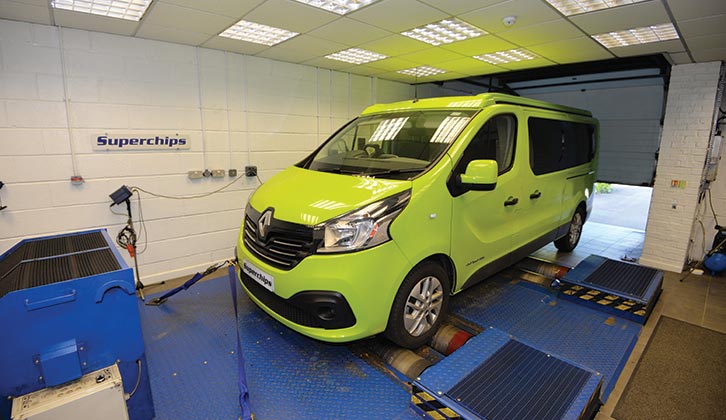
Extra horsepower and more torque can allow you to run a higher gear and reduce the engine revs, which can aid economy. It’s not quite that simple, because engine load (and hence how much fuel the ECU injects into the cylinder) also plays a part, but if you drive a more powerful engine carefully on A-roads and motorways, you can get better consumption than a less powerful engine being revved more in lower gears.
Over the years I’ve done in excess of 100,000 miles in remapped vehicles, and experienced most of their benefits and downsides. In this guide, I’ll talk you through everything you need to know about a motorhome engine remapping, but you can also jump ahead if you’re in a rush.
What is engine remapping?
All engine ECUs come with a built-in programme that controls the engine. The ECU is rather like the conductor of an orchestra. It gathers information from the woodwind, brass, percussion and strings (aka engine sensors such as the mass air flow meter, crankshaft sensor and throttle position sensor), then uses these to set the tempo (timing of the spark in petrol, fuel injection in diesel). This is essentially a glorified timing device.
The ECU conductor follows its sheet music to the letter. But here’s the good bit. There is extra music on the sheet. Hidden notes that extend its performance. Engine remappers simply allow the ECU to play some of these extra notes.
The original code for the ECU is built in by the programming team – in the case of a Fiat Ducato, it could be made by Bosch, Continental, Magneti Marelli or FPT. The code is encrypted and very complicated, and the way the ECU stores it is not in an order easily deciphered by humans. So you might have controls for the ABS system alongside the throttle position settings.
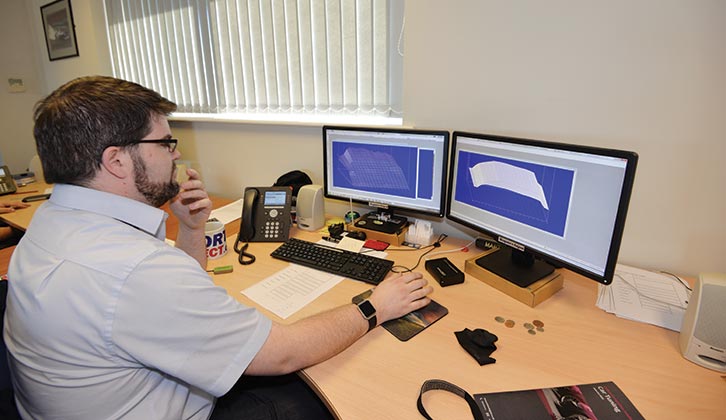
To make the code easier to visualise, 3D maps of key attributes are used, so remappers can see which areas of performance need to be optimised. They don’t reprogramme any of the ECU map, they simply move the boundaries so that more of the coding can be used.
So why do ECU manufacturers not optimise all of their maps in the first place? This is down to a number of reasons. First, the vehicles are sold to global markets and the requirements for fuel grade and local transport infrastructure differ from region to region. So do the emissions levels. Manufacturers try to make each engine hit as many performance targets as possible for each region – inevitably that leads to compromises.
The other reason they in effect detune their engines is to make them sit in different categories for marketing purposes. Some van makers offer different engine outputs at different price points, often with very little difference in their spec.
Which engines can be remapped?
Normally aspirated engines (that is, non-turbo) can be remapped, but the gains are small and although it can smooth out lumps and bumps in the power and torque curves to increase driveability, it might not be worth the cost.
Most modern diesel and petrol engines use a turbo, allowing them to offer similar performance to a larger-capacity engine, while using less fuel. Any engine with a turbo can be remapped. But be wary of firms promising power gains higher than anyone else – they are either fibbing or ignoring the manufacturer tolerances for the drivetrain.
Types of remap
The very earliest remaps were actually rechips and involved opening the sealed ECU, removing the original chip, then soldering in a replacement chip reprogrammed for enhanced performance. Brutal, but it worked. I ran an Audi 80 TDI that was rechipped from 90bhp to 110bhp and did 50,000 trouble-free miles in it.
The method of remapping that superseded rechipping was to use an outboard tuning box in the engine bay, usually connected to the fuel sensor as well as the boost sensor for the turbo. Some versions of this involve plugging a box directly into your diagnostic port.
The latest versions of these tuning boxes link to an app that allows you to select the level of extra power you need, as well as having a setting for maximum economy. So you can choose which map to use. This is great – use super-frugal mode while fuel costs are high and then revert to a more powerful mode when prices are lower.
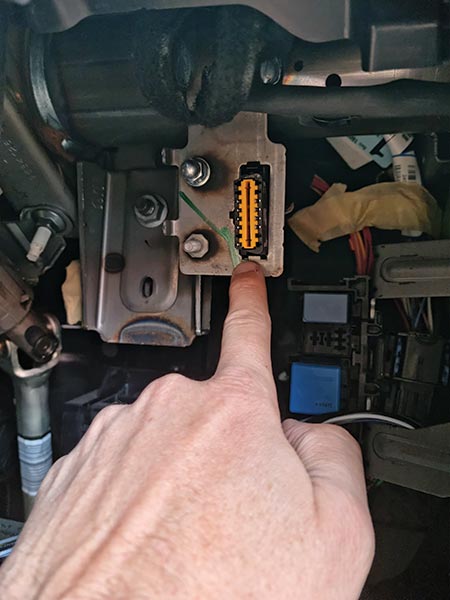
The other method of remapping involves downloading your original engine map from your vehicle’s ECU, via the diagnostic port, then moving the parameters of the map before reinstalling it on your vehicle. This is done by customising your ECU map or by reloading on a generic map of that particular engine.
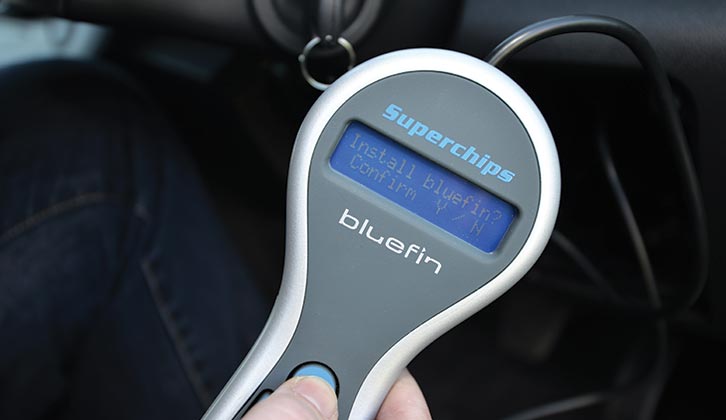
Many tuning firms can supply a box with a generic map in it for DIY fitting, but it’s best to have a technician install the remap/tuning box. The best method of all – slightly more expensive – is to have a custom remap on a rolling road. Engines all have slightly different performance characteristics – even identical ones that have come from the same production line – and the custom map allows for this.
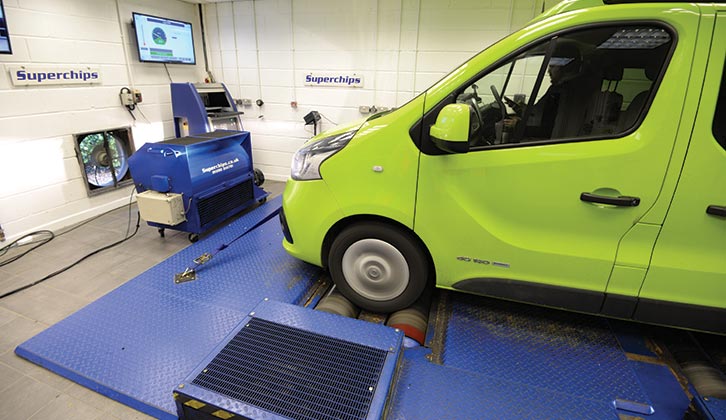
Preparation before a remap
Simply plugging in a tuning box on a 100,000-mile engine that hasn’t been serviced in three years and expecting it all to work perfectly is wishful thinking. Before going down the remap or tuning box route, you need to ensure your engine is in tip-top condition and has been recently serviced – especially the fuel and oil filters. Equally, if your clutch is starting to slip, adding extra power won’t help – it will simply finish it off faster.
There is an element of common sense needed here. If you have an older engine that seems lacking in power, you need to ensure that it is in a good state of health before adding additional performance. Clues to a tired engine include excessive oil or coolant consumption, blue smoke on acceleration (indicating oil), excessive black smoke (in the case of a diesel) or white smoke (which could be due to coolant issues).
If there is any doubt about the health of your engine, have it investigated by a garage and returned to its original performance figures, before you consider anything additional.
What are the pros of motorhome engine remapping?
Remaps can be carried out to enhance a vehicle’s performance, by increasing the power and torque of the engine, or to improve its economy. Many will offer a bit of both – enhanced performance with slightly better economy.
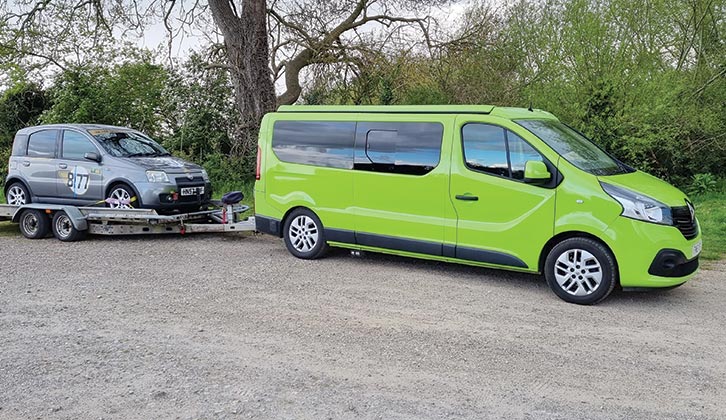
The thing that stands out when you experience a remapped vehicle is how much better they drive compared to a standard one. As well as boosting performance, many remapping firms take time to smooth out irregularities in the power and torque curves. So what you’ll notice most is how much smoother and more linear the power delivery is.
This, coupled with a little extra power, really does make the vehicle feel more effortless and relaxing to drive. It really makes me wonder why none of the manufacturers supply their vehicles in this way to begin with.
In the case of my current Renault Trafic, it was tuned from 140bhp to 165bhp by Superchips over five years ago and has since been trouble-free.
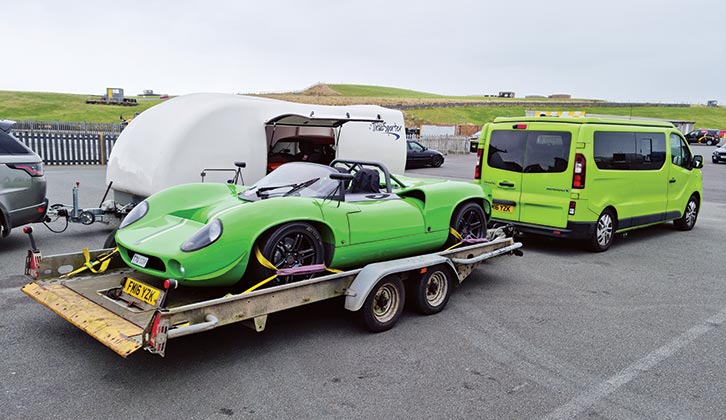
The tuning map is on a Bluefin device and can easily be removed from the ECU at the touch of a button. Reverting to the standard ECU settings, the Renault feels quite flat and lacklustre.
It comes to life and feels so much smoother on the enhanced map. Economy hasn’t changed much on the more powerful map – after all, you don’t always use the extra power.
And what about the cons of remapping?
Cost is the main downside to these devices, and this can tempt some people into buying a cheaper product. Generally, a remap or tuning box will cost around £300 for most vehicles.
Some of the very basic sub-£100 devices do not deploy performance smoothly and can deliver the extra power in large, jerky dollops. This doesn’t do the engine or the gearbox any good.
Equally, some of the cruder tuning boxes are not perfectly mapped and can result in stuttering performance. That’s if they work at all. This won’t be an issue with a reputable tuning box or remap – if the remap doesn’t give you silky-smooth power, demand a refund.
The other point to make is that, while having extra power and torque can improve your vehicle’s economy, this can only happen if you adapt your driving style to suit. If you change to a higher gear slightly sooner and keep the revs down, you should get a slight improvement in economy. However, if you drive with your foot to the floor, you’ll get worse economy. So you need to use the extra performance now available to you in an intelligent manner.
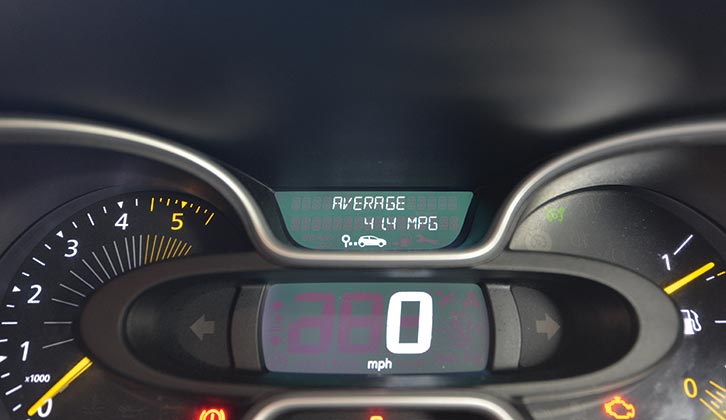
Certain components can wear slightly faster with more power; so, for example, a clutch might last a few thousand miles less. However, as most van parts are designed for far higher mileages than most motorhomes cover in their lifetime, this should not really be a major concern.
What should you look for in a remapping firm?
The key to choosing a remapping firm is not to buy on price alone. There are lots of crazily cheap deals online, which all come with a warranty lasting about as long as it takes your payment to go through. If it looks too good to be true…
Ignore these overly cheap offerings and pick a brand that is well established, and advertises in the motorhome magazines or is a regular fixture at the shows. Look for internet feedback about them – this can alert you to shady firms or those that treat customers poorly.
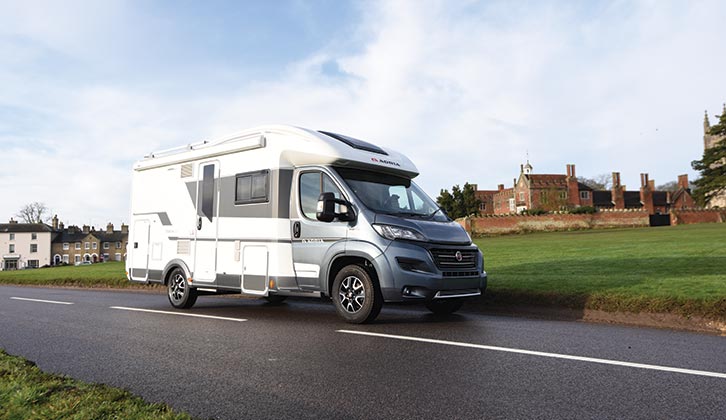
Don’t be tempted by companies claiming to offer more power than others – it’s very easy to produce a cheap copy of somebody else’s product and boast a few more horsepower at a reduced price, and the internet is awash with new firms looking to make a fast buck.
Some of these products do indeed make more power than others, but this is often by ignoring the maximum torque limits that manufacturers set for their drivetrains.
Stick to reputable brands – ideally with UK premises – that have been established for many years and offer a warranty of several years.
What about my warranty?
If your base vehicle is still under manufacturer warranty, you need to go through the terms and conditions carefully, to check whether enhanced performance will affect it. Some manufacturers offer remaps as an upgrade that keep your original OE warranty.
And some remapping firms offer to mirror the OE warranty for a set length of time or mileage, but the quality of these warranties can vary. Some are comprehensive, others
are insurance-backed products that are so nitpickingly precise in what they will and won’t cover that they’re not really worth the paper they’re printed on. Some only cover the tuning box or remap itself.
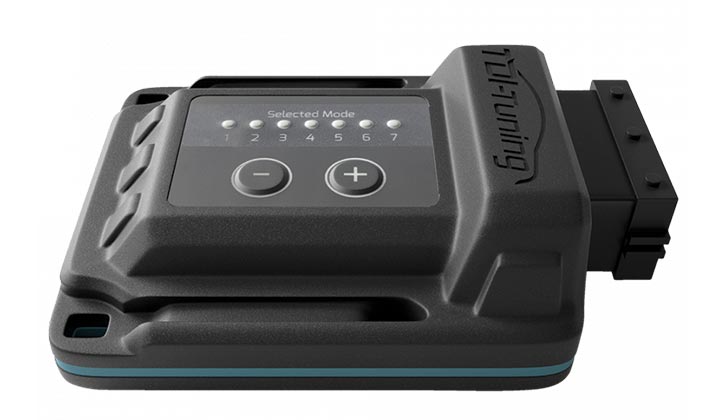
As remaps are only a fairly mild performance upgrade, they generally don’t put that much more strain on the drivetrain, so you’d really have to be very unlucky to have a premature failure after remapping by a reputable firm.
However, if your vehicle is still under warranty, you will need to consider the implications of remapping or adding a tuning box very carefully. While they probably won’t cause a component failure, if a failure does occur when such a device is fitted, your dealer might refuse your warranty claim.
Insurance implications
If you have your vehicle remapped or altered in any way from the original specification, you need to tell your insurance company.
This is generally a simple process and will simply involve a quick phone call. It doesn’t usually increase the cost of your insurance, but some firms do charge a nominal fee to alter your documents (typically around £25). It’s not a big deal as insurers are used to remapped vehicles these days – it’s a common upgrade for a motorhome.
If you don’t tell your insurance company and need to make a claim following an accident, you might get a reduced payout or could even have your claim refused entirely if the insurance assessor spots that a tuning box is fitted. It is quite common practice for crash investigators to plug into your vehicle’s diagnostic port and download ECU data from a crash site – this can include speed and ABS triggering and might even be able to detect a remapped engine.
So it’s really not worth being hesitant about this – just tell your insurance company.
Verdict
Remapping is a tried and tested way to enhance the performance of your motorhome’s engine. If you just want a little extra power for getting up to motorway speeds or tackling hills, it’s a great way of doing this without invasive engine modifications.
Driven sensibly, your vehicle will offer better economy, while all drivers will appreciate the extra smoothness and effortlessness of a remap. It’s not about speed, it’s about making your motorhome more relaxing to drive.
- Looking for a new ‘van instead? Then take a look at our round-up of the best motorhomes on the market
- You can also take a look at the steps you can take to improve your motorhome security
- We talk you through how you can maximise your motorhome fuel consumption
Future Publishing Limited, the publisher of practicalmotorhome.com, provides the information in this article in good faith and makes no representation as to its completeness or accuracy. Individuals carrying out the instructions do so at their own risk and must exercise their independent judgement in determining the appropriateness of the advice to their circumstances. Individuals should take appropriate safety precautions and be aware of the risk of electrocution when dealing with electrical products. To the fullest extent permitted by law, neither Future nor its employees or agents shall have any liability in connection with the use of this information. You should check that any van warranty will not be affected before proceeding with DIY projects.
If you’ve enjoyed reading this article, why not get the latest news, reviews and features delivered direct to your door or inbox every month. Take advantage of our brilliant Practical Motorhome magazine SUBSCRIBERS’ OFFER and SIGN UP TO OUR NEWSLETTER for regular weekly updates on all things motorhome related.
